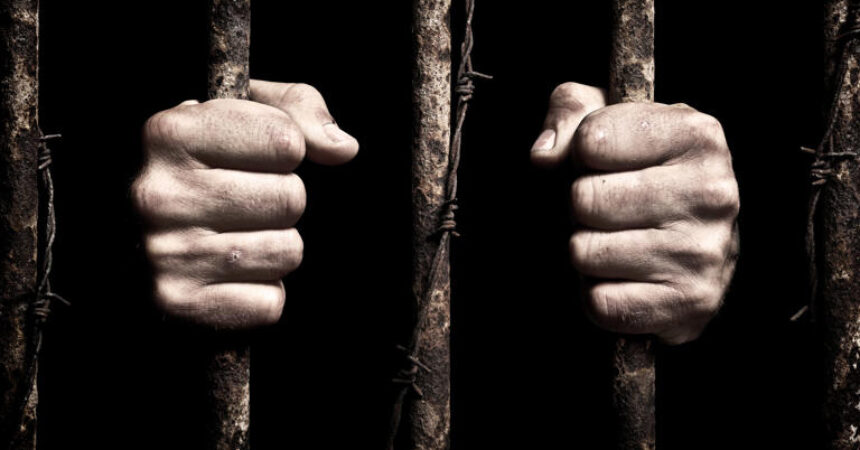The United States, long an outlier when it comes to executing its citizens, is in the middle of putting five men to death in a six-day period.
The execution spree began Friday with the South Carolina execution of Freddie Owens amid doubts over his guilt. On Tuesday, two men were executed within an hour of each other: Marcellus Williams was executed in Missouri at 6:10 p.m. CT even though the prosecutors in the case and the victim’s family wanted his life spared amid new evidence. And at 7:01 p.m. CT, Texas executed Travis James Mullis in the murder of his 3-month-old son in 2008.
Thursday is expected to bring another double execution. Alabama is set to use nitrogen gas to execute Alan Eugene Miller in the shooting deaths of three co-workers in 1999 despite evidence of his mental illness and a witness to the state’s previous nitrogen gas execution in January who described the method as “horrific.”
Also Thursday, Oklahoma is set to execute Emmanuel Littlejohn in the death of a convenience store clerk in 1992 despite his arguments that he wasn’t the shooter.
If Thursday’s executions proceed, the U.S. will have executed 18 death row inmates this year. Another six are scheduled before the end of December, and more could be added to the calendar.
At more than 1,590 executions in the past five decades, the United States is a rarity among developed nations when it comes to the ultimate punishment, with more than 70% of nations globally having banned the practice, according to the Death Penalty Information Center.
In 2020, for instance, only five other countries executed more of its citizens than the United States: China, Iran, Egypt, Iraq and Saudi Arabia, according to the center. Globally in 2023, the number of people put to death jumped by 30%, making it the deadliest year in nearly a decade, according to a report released Tuesday by Amnesty International.
With the U.S. on pace to execute at least 24 prisoners this year, USA TODAY looked at the states that have executed the most, which states have banned the practice, and how many innocent people have been put to death in the process.
What states still have the death penalty?
Twenty-one states have the death penalty. They are: Alabama, Arkansas, Florida, Georgia, Idaho, Indiana, Kansas, Kentucky, Louisiana, Mississippi, Missouri, Montana, Nebraska, Nevada, North Carolina, Oklahoma, South Carolina, South Dakota, Texas, Utah and Wyoming, according to the Death Penalty Information Center.
Six states still consider the death penalty legal but have put executions on hold for various reasons, like the shaky reliability of execution drugs: Arizona, California, Oregon, Ohio, Pennsylvania and Tennessee.
The rest of the United States − 23 in total − do not have the death penalty, including red states like North Dakota and Alaska, and the bluest of states, like Vermont and Massachusetts.
Who is executing the most inmates?
The Polunsky Unit, where death row inmates are held in Texas, is pictured on May 21, 2013 in Livingston, Texas, about 40 miles from Huntsville. Texas executes more inmates than any other state in the nation, by far.© AFP via Getty Images
Texas has executed the most inmates of any other state in the nation, and it’s not even close. The Lone Star state has put 590 inmates to death since 1982, most recently Travis James Mullis.
Texas executed eight inmates last year and four so far this year, with at least two more men set to be put to death in the state by the end of 2024.
The following are the five states with the most executions since the early 1980s, according to the Death Penalty Information Center:
- Texas, 590
- Oklahoma, 125
- Virginia, 113
- Florida, 106
- Missouri, 100
Death row inmate Hank Skinner speaks during an interview with AFP, in the visiting room at the Allan B. Polunsky prison in Livingston, Texas, on May 25, 2022. Skinner, who had been on death row in Texas for nearly three decades, for the murder of his girlfriend and two sons, died of natural causes in February 2023 seven months before his execution.© Cecile Clocheret / AFP via Getty Images
How many executions have there been in 2024?
So far this year, there have been 16 executions, four in Texas, three each in Alabama and Missouri, two in Oklahoma, and one each in Utah, Florida, Georgia and South Carolina.
There are nine more currently scheduled through the end of the year. Among them: Alan Eugene Miller in Alabama on Sept. 26, Emmanuel Antonio Littlejohn in Oklahoma on Sept. 26, Garcia Glen White in Texas on Oct. 1, and Robert Leslie Roberson III in Texas on Oct. 17.
More executions could be scheduled before the end of 2024 but it’s unclear how many exactly.
1 / 11


Anti-death penalty activists have a moment of silence during the execution of Anthony Sanchez at the Governor’s Mansion in Oklahoma City, on Thursday, Sept. 21, 2023.
How many innocent people have been executed?
It’s impossible to say how many innocent people have been executed but we do know that dozens and dozens of inmates have been wrongfully sentenced to death in the past five decades. Some have spent decades of their lives in prison before being exonerated.
One June 19 in Texas, the state’s Court of Criminal Appeals exonerated Kerry Max Cook after he spent nearly 20 years on death row in the murder of Linda Jo Edwards. The court found him innocent, writing in its opinion that the case “is riddled with allegations of state misconduct that warrant setting aside” Cook’s conviction.
At least 190 people have been exonerated from death row in the U.S. since 1973, largely Black and Latinx inmates who are wrongfully convicted at a higher rate than white people, according to the Death Penalty Information Center and the Innocence Project.
A 2014 study by the Proceedings of the National Academy of Sciences estimated that at least 4% of people sentenced to death are innocent.















